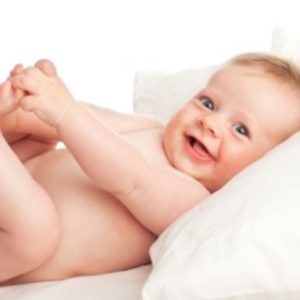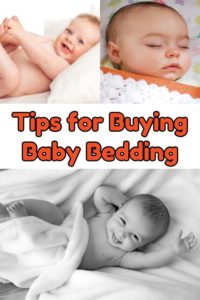 Choosing baby bedding is very different from choosing bedding for an adult or even an older child. For a start, in this early stage, your child won’t require a top sheet, a quilt or a pillow. Nor will he or she need a comforter or a sham.
Choosing baby bedding is very different from choosing bedding for an adult or even an older child. For a start, in this early stage, your child won’t require a top sheet, a quilt or a pillow. Nor will he or she need a comforter or a sham.
While lovely to look at, the latter two items should only be used for decorative purposes. This is because they pose a suffocation risk, so they should always be removed before placing your baby in his or her crib.
In this article, we will look at what you will need in the way of baby crib bedding. We will also look at the optional and fun pieces that can be used to brighten up the nursery and make it visually appealing to adults and baby alike.
Baby Bedding Essentials
Following are the basic bedding essentials you will need for your baby. Keep in mind; the bedding will have to be washed and changed often. This being the case, make sure everything is machine washable and buy enough of each piece that you will always have a clean one on hand.
- Fitted Sheets
A fitted sheet is a must. There are many brands to choose from that come in a standard size. If you buy a non-standard sized crib, its mattress won’t be a standard size either. In this instance, the mattress will come with sheets, or you will be able to buy sheets to pair with it.
NB: For the utmost safety, buy a fitted sheet that fits the mattress snugly. One with an elastic band that goes under the mattress to hold it firmly in place would be a good choice.
- Waterproof Mattress Pads
Other than premium organic mattresses, most good baby mattresses come with a waterproof plastic lining.
A waterproof mattress pad that sits beneath the fitted sheet is essential. It will be more comfortable for your baby and help to prevent staining.
- Antiallergen Encasements
Something all mattresses have in common is that they are prone to housing dust mites. With dust mites being the leading cause of airborne allergies, it’s a good idea to buy an antiallergen encasement to place over the crib’s mattress, beneath a fitted sheet.
NB: To retain the encasement’s allergy-resistant properties, be sure to follow the manufacturer’s care instructions. This will usually require that it be machine washed in hot water, then tumble-dried, at least every three weeks.
Recommended Baby Bedding Accessories
- Sleep Positioners
A sleep positioner will keep your baby on his or her back all night. This is considered to be the safest position for sleeping. When placed next to their hips, a sleep positioner will prevent your baby from rolling onto his or her front.
NB: Stop using the sleep positioner when your baby can roll over independently.
- Wearable Blankets
If your little one’s bedding bunches around his or her face, they may re-breath oxygen-depleted air. This is a possible cause of SIDS. Replacing loose blankets with wearable blankets lessens the likelihood of the blankets covering the baby’s mouth and nose.
If you want to use a regular baby blanket, make sure it is lightweight and breathable.
Click this link to read an article on Reducing the Risk of SIDS.
Baby Bedding Optional Extras
- Bumpers
While decorative, in the past bumpers also provided a padded layer that helped to prevent the baby’s  arms and legs from slipping through their crib’s open rails. With today’s very strict safety standards, crib styles have changed to meet these requirements, so a bumper isn’t necessary.
arms and legs from slipping through their crib’s open rails. With today’s very strict safety standards, crib styles have changed to meet these requirements, so a bumper isn’t necessary.
Many parents, however, like the finished look a bumper gives to the crib. If you do use one, remove it when your infant can pull him or herself up. This will prevent them from using it as leverage to climb out of the crib.
NB: If you’re using a bumper, make sure it’s a snug fit. Tie it securely to the crib’s railings and tuck it between the mattress and the side of the crib, leaving only two to three inches sticking out. This will improve airflow and reduce the likelihood of your baby’s hands or feet becoming trapped between the bumper and the mattress.
- Crib Skirts
As with a dust ruffle designed for an adult-sized bed, a crib skirt is purely decorative. The one real function it has is to cover any bits and pieces you may be storing underneath the crib. Keep in mind, though, when the mattress is at its uppermost setting, the skirt won’t provide much coverage.
Next, we will look at how to go about choosing the right baby bedding style for your little one’s nursery.
Baby Bedding Style & Color Options
Before choosing baby bedding, decide if you would like your child’s nursery to be a modern or traditional style. The look you’re after may determine your color choice to a certain degree. However, with so many options available, if desired you could buy baby girl bedding in pink or baby boy bedding in blue, in an untraditional design. Alternatively, you could buy a traditional design in a trendy color, if that is the way you want to go.
Single or multi-colored gender-neutral crib bedding is another option. Available colors include red, orange, teal, turquoise, lime green, aqua, purple, navy blue, black, and pretty much any other color you may want. Multiple brights in a geometric pattern can look stunning, while single colors make for easy coordination of the nursery.
much any other color you may want. Multiple brights in a geometric pattern can look stunning, while single colors make for easy coordination of the nursery.
If you’d like something a little more sophisticated, two-toned baby bedding is a timeless look that will suit any décor. Popular color combinations right now are black and white, gray and teal, pink and gray, green and pink, and green and brown.
Another option is sports themed baby bedding and other themed baby bedding, including airplanes or fire engines for boys and ballerinas or butterflies for girls.
There are also gender-neutral cartoon-themed sets featuring the Smurfs, Sponge Bob Square Pants, and various other cartoon characters. While cute and colorful, these can appear dated if the cartoon is no longer current. Your baby won’t care, but this is something to keep in mind when designing the nursery.
Buying a baby bedding set will make accessorizing the room easy. A 9-piece set might, for example, include a blanket, fitted sheet, bumper, skirt, throw pillow, two window valances, a toy bag, and a diaper stacker. With some sets, there is also the option of purchasing matching lampshades, floor rugs, and wall decals.
If the baby bedding set you like comes with a blanket or throw pillow and you’re concerned about the safety aspect of these, use the blanket as a play mat and place the pillow on a rocker or chair.
Custom made baby bedding is popular nowadays. It may sound extravagant, but if you know what you want and you can’t find it in the shops or online, having it custom-made will save you a lot of time and frustration. If you’re handy with a sewing machine, you can even make it yourself.
Baby Bedding Fabric Options
Something else you will need to consider is fabric. The most popular fabrics for baby bedding are cotton, polyester, flannel and polyester fleece. Cotton works well for warmer climates. Polyester is easy to care for, but not being as breathable or absorbent it tends to be a little warmer. Flannel and polyester fleece are suitable for cooler climates. Both are easy to care for, able to be thrown into a washing machine and dried in a dryer.
Silk is luxurious, but it is more delicate, more expensive and it usually requires extra care. Other options include bamboo, merino wool, and cashmere, which again can be expensive and require extra TLC.
Organic cotton baby bedding is becoming increasingly popular. It has the qualities of cotton, but it is grown naturally, without the addition of chemicals. For this reason, many people see it as the best choice not only for the environment but also for their baby.
Buying baby bedding that is “Oeko-Tex and IVN certified,” will ensure it is free of formaldehyde and other potentially harmful chemicals.
Most commercial laundry detergents contain ammonia, various chemicals, and fragrances. If you decide to use organic baby bedding, be sure to wash it with a chemical-free washing detergent, or it defeats the purpose.

